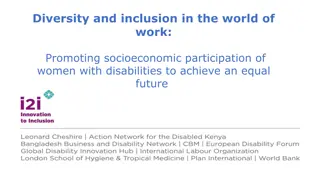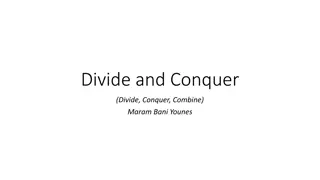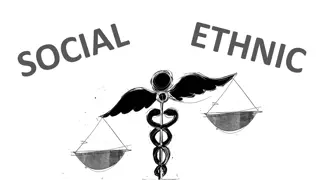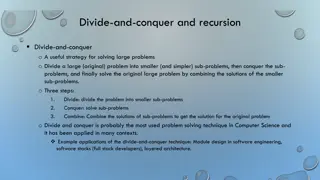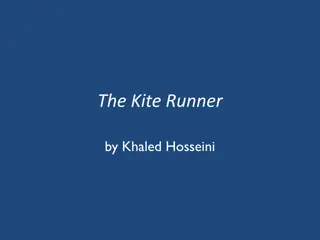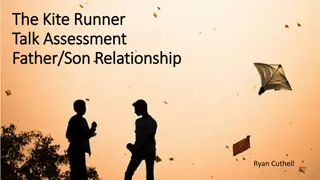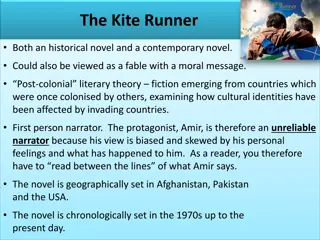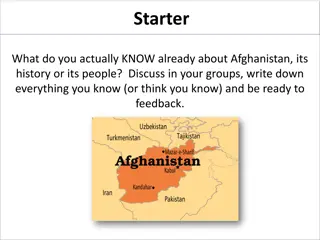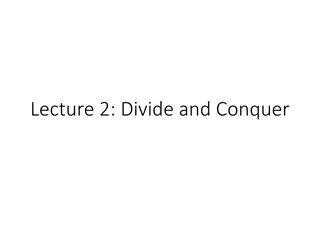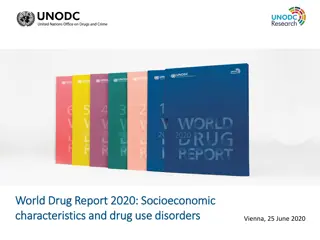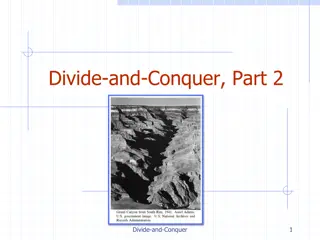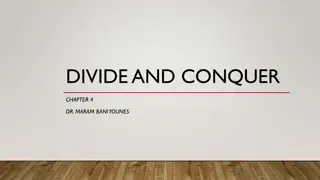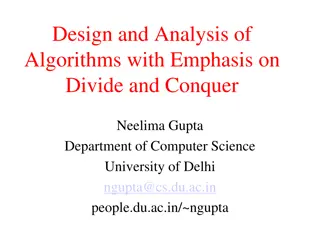Socioeconomic Divide and Power Dynamics in "The Kite Runner
Exploring the societal divisions represented by Amir and Hassan in Afghan society, along with the emphasis on abuse of power through characters in "The Kite Runner," shedding light on how these themes shape the direction of their lives and influence the narrative.
Uploaded on Sep 10, 2024 | 0 Views
Download Presentation

Please find below an Image/Link to download the presentation.
The content on the website is provided AS IS for your information and personal use only. It may not be sold, licensed, or shared on other websites without obtaining consent from the author. Download presentation by click this link. If you encounter any issues during the download, it is possible that the publisher has removed the file from their server.
E N D
Presentation Transcript
Essay Topics for The Kite Runner UNPACKED Introduction to all set prompts
Amir and Hassan represent the divisions in Afghan society and how this dichotomy affects the direction of their lives. Discuss A discuss type of prompt is best tackled as a debate where you are using your skill at reasoning, backed up by carefully selected evidence to make a case for and against an argument. In discussing your debate, you should point out the advantages and disadvantages of a given context, (in this case the divisions in Afghan society). Remember to arrive at a conclusion. Before you can commence however, you must unpack the prompt. This is best done by highlighting the key words and then rewriting the prompt in your own words. Try The Afghan society is divided. There are those who are rich and those who are poor. Being rich or poor in Afghanistan means that your life takes a different direction.
Amir and Hassan represent the divisions in Afghan society and how this dichotomy affects the direction of their lives. Discuss. Continued Sample Introduction The contrast between social classes in Khaled Hosseini s The Kite Runner , is seen in the character s Amir and his friend Hassan. Amir is the son of Baba, a wealthy businessman and a Sunni Muslim. His life is one of privilege and comfort living in a fine home and enjoying every social advantage. Amir goes to school, owns books, and reads well. Hassan, however, is a member of Hazara, an ethnic minority in Afghanistan. The Hazara make up the lowest class in Afghan society; individually and as a group, they are berated, rejected, and dismissed as human beings. They live lives of wretched poverty and discrimination. This dichotomy affects the direction of their lives as Amir has his dream of being a writer realized and Hassan s life ends in a premature and traumatic death.
How is abuse of power emphasized through the characters in The Kite Runner? A HOW question will ask you to present, in a logical order, and with reference to relevant evidence, the stages and combination of factors that give rise to something. In this case, giving rise to the abuse of power through the characters. Lets unpack and re-write the prompt once again The characters in The Kite Runner show us how those in power abuse the weaker ones or those in lesser power.
How is abuse of power emphasized through the characters in The Kite Runner? Continued Sample Introduction In Khaled Hosseini s novel, The Kite Runner Hosseini defines power in modern day Afghanistan as a political or national strength. Power is an ability to do an act in order to accomplish something and finally. Power is to control or show possession over ones authority. Hosseini explores the corruption of power through characters and cultures, in Afghanistan. Firstly, Baba a rich man and a well respected business man has his own beliefs yet violates the use of power by going against his values and morals. Moreover, Assef a half German and half Afghani with a lot of power takes his powers to the next level by abusing those in his control including Hassan. Lastly, the Taliban's who are of Pashtun ethnic controlling Afghanistan from 1996 until 2001. All of these characters and members of the the Afghani society are shown to abuse their power.
Does Amir achieve complete redemption and atonement in the novel? When you are asked a DOES question weigh up to what extent something is true. Persuade the reader of your argument by including relevant information from the text, but also remember to point out any flaws and counter-arguments as well. Conclude by stating clearly how far you are in agreement with the original proposition. Then of course re-write the prompt. Try this: Amir is forgiven for everything he has done to Hassan by the time the novel ends.
Does Amir achieve complete redemption and atonement in the novel? Continued . Sample Introduction One of the central themes of The Kite Runner by Khaled Hosseini, is atonement and whether Amir truly redeemed himself for what he did to Hassan. The quest for redemption makes up much of the novel s plot. Throughout his childhood, Amir s greatest struggle was to redeem himself to Baba for killing his mother during childbirth, and for growing up a disappointing son, so much unlike Baba. After Hassan s rape, Amir spends the rest of his life trying to redeem himself for betraying his loyal friend. His need for atonement culminates in Amir s return to Afghanistan and his attempts to save and adopt Hassan s son Sohrab. This journey and Amir s decisions along the way come to head and prove that he does achieve redemption.
The relationship between Amir and his father acts as a catalyst for the events in The Kite Runner. Discuss A discuss type of prompt is best tackled as a debate where you are using your skill at reasoning, backed up by carefully by selected evidence to make a case for and against an argument. In discussing your debate, you should point out the advantages and disadvantages of a given context, (in this case the relationship between Amir and his father being the main reason for what happens in the novel). Remember to arrive at a conclusion. Now let s rewrite the question Because of the relationship between Amir and his father s the story of The Kite Runner can continue.
The relationship between Amir and his father acts as a catalyst for the events in The Kite Runner. Discuss Continue . Sample Introduction In The Kite Runner , Khaled Hosseini uses the complex emotional bond between Amir and his father as the catalyst which propels the narrative forward. Hosseini tells us that a bond so cherished and sought after, may not always be one of love, but one filled with pain and longing. Baba has little emotional attachment to his son early on and because of this emotional detachment Amir is denied the fatherly figure needed in his life. This neglect and lack of fatherly interest created the problem prevalent throughout the entire story, that is the need for a father s love and empathy. In his desperate attempt to win his father s love, Amir makes the decision to lie and betray Hassan. The complexities of his decision is what moves the narrative forward.
Amir finds a way to be good again and frees himself of guilt. Discuss A discuss type of prompt is best tackled as a debate where you are using your skill at reasoning, backed up by carefully by selected evidence to make a case for and against an argument. In discussing your debate, you should point out the advantages and disadvantages of a given context, (in this case by going back to Afghanistan and adopting Sohrab, Amir becomes good again). Remember to arrive at a conclusion. Now let s re write this prompt: Amir is no longer guilty of his crime because he goes back to Afghnaistan, adopts Sohrab and bring him back with him to the U.S.
Amir finds a way to be good again and frees himself of guilt. Discuss Continue In The Kite Runner , Khaled Hosseini presents his protagonist Amir as a complex character who is forced to face his nemesis in order to redeem himself. Amir becomes good again by returning to Afghanistan and rescuing Sohrab, who, he discovers is his nephew. Since he had failed Hassan when they were both children, this is a form of redemption for him. In rescuing Sohrab, Amir has to not only face Assef his adversary but escape war torn Afghanistan and leave the country safely with the boy. In doing this, Amir risks his own life, the life of Soharab and faces the demons of his past in doing so. By conquering his daemons and risking his own life in the process and finally adopting the son of his half brother, Amir finally frees himself of guilt.
How does masculinity play a central role in The Kite Runner? When answering a HOW question, present your argument in a logical order, and with reference to relevant evidence the stages and combination of factors that give rise to something. Now let s re-write the prompt: Masculinity is one of the main drivers of the novel.
How does masculinity play a central role in The Kite Runner? Continued . Sample Introduction Masculinity is a major theme in The Kite Runner . In fact, there aren't a lot of women in the novel. Hosseini really only spends time writing about two women: Amir s wife and mother-in-law. Hosseini s protagonist Amir, grows up in a household full of men and his father embodies a robust masculinity. Amir challenges this traditional model of manhood. Amir isn't the masculine Pashtun Baba wanted. He isn't a sports-playing, bear- hunting man of a boy. The novel asks some tough questions about what it really means to be an Afghan man or a man in general and ultimately embraces some ideas of traditional manliness. Amir s desire to become the man and son Baba always wanted leads to disastrous consequences.








